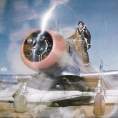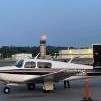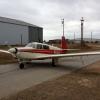Leaderboard
Popular Content
Showing content with the highest reputation on 03/24/2023 in all areas
-
For those who have not heard the term, MFT is defined as Medical Flight Test. It took 4½ months, but the day finally arrived on Tuesday. Tuesday turned out to be one of the worst days of the year due to a "bomb cyclone" that hit the Bay Area. The FAA examiner agreed to do the ground portion that day and rescheduled the flying portion for today, Thursday. This whole process started last October when I did not make the vision part of the 2nd Class Medical for the first time. My left eye was 25/20 instead of 20/20. I met all the other requirements. He issued me the 3rd Class and said it was possible to get a Special Issuance by taking a MFT. I decided to go for it, as there were some things I like to do that require the 2nd Class. Little did I know the hoops that I would have go through due to that minor issue. First, I had to get in touch with the Local Medical Branch of the FAA in Los Angeles. They requested a bunch of documentation from the Optometrist. After reviewing that they required me to see an Ophthalmologist and added a bunch more requirements. By now it was December and the documentation was reviewed by the Regional Flight Surgeon in Los Angeles. Apparently, the results were good enough that they finally sent me a LOA to take a MFT good for 6 months. Then the process of getting an Appointment with the FSDO started. I called and called, but no one would return my calls. I finally went down there in person and rang and rang the bell. Surprisingly, the FSDO Manager came down and we discussed what I needed. He said he needed the letter before he could schedule it. I showed him the LOA that had been emailed to me, but that was not sufficient. Several more weeks passed (I received the certified LOA letter the day after I spoke with the FSDO Manager) but no response. I started calling and calling again. Finally, I got an email that my case had been assigned to an ASI (Air Safety Inspector). After some more emails back and forth, I got one from the ASI that he could schedule me for the exam in two weeks. I was thinking the exam would be some simple test of going up and flying around to see that I could see and that would do it. Little did I know that the test was covered in a special FAA Order 8900.1 Vol. 5, CH 8, Sec. 1. I read it. It was extensive. Uh Oh. This is serious business. Recognize that when you go up with the FAA everything may be on the line. You're being evaluated. For those interested I've attached the email describing what the appointment would entail. The examiner was very nice, but he was going to go by the book. I spent hours getting the documentation organized like I have told my students to do before an exam. Actually that was good because I took the time to make sure all my aircraft supplements were up to date. He appreciated that I had bookmarked all the critical aircraft airworthy inspections. He didn't require any paper charts, but did want to see that what I used in flight were current. It had been years since I used a VFR Chart so I had previously spent some hours reviewing all items on that chart and what they meant. He spent a lot of time reviewing the Weight and Balance for the Flight. Today was the big day. Last night I found that today was the day for data updates. That was a surprise. I loaded up the data on cards but have always used Database Concierge for transfer to the GTN 750. Big mistake. When I went out to the plane a couple of hours early to make sure I was on time, I spent a hour trying to get the Concierge to work. It wouldn't and I'm done with using it in the future. Garmin just doesn't have their act together with it in my opinion. Luckily, I brought my computer for contingencies, and dowloaded the data to a card at Atlantic. The flight was fair and covered all the items on the checklist. There was a helicopter spotted and he asked me to estimate how far away it was. He asked me where a certain airport was and whether I thought I could make it if I lost an engine. I said I could and he said "do it". It turned out to be pretty easy. I had been worried that he might asked me to do it off airport. That would have been more difficult. He asked me to read a number of items on the panel. That was easy. He then asked me to identify a certain landmark and I couldn't find it. It turns out it was almost totally covered in cloud. He picked another landmark and I identified it immediately. He asked me some items that required me to use the Aera 760 and I got through those. Then it said, "let's go back to San Jose". Part of the test was showing I could land the plane. Since I have made a landing video, that would have been a little embarrassing had I messed that up, but it turned out to be a greaser. Once back at the hangar, I shut own. Only then did he say I had "passed".8 points
-
Yeah, me too. Small corrections on final approach, hold rudder until centered then relax. Call it 2º, anything more turn the yoke like always. But not on the whole approach! Just short final, especially with an ILS where the cone gets really narrow. Use the yoke to turn, climb and descend. Add some rudder to stay coordinated in turns. Use pitch trim to eliminate yoke forces on long-ish climbs and descents, but not if you're 100' high on approach . . . . At some point, "rules" go away and common sense must apply. In aviation, many times there is zero tolerance for using zero tolerance rules, and they usually end badly.3 points
-
3 points
-
ATC is really helpful in cases like yours and mine! Glad all turned out great!2 points
-
Kind of hard to troubleshoot while in the thick of things, but some points to remember for the future: 1. Modern radios have a visual transmit indicator so you can tell if it is a transmit or receive problem. If you are really anal, a lot of radios (I know for sure on the GTN and GNC) allow you to set the sidetone so you are hearing your actual RF transmission demodulated rather than just amplified mic audio. 2. Most radios time out after a continuous transmission of 30 seconds or so to protect from overheating, so if the mic button is truly stuck, it will only jam the frequency for that time. 3. Most audio panels will failsafe to a direct headset connection to Com 1 if you pull the audio panel breaker. 4. Some Mooneys have a emergency mic and phone jacks wired to Com 1. Never hurts to think through various scenarios and write up a little emergency checklist. The big guys call it a QRH - Quick Reference Handbook. Skip2 points
-
This ^^^^. I once lost the ability to transmit, due to rain water leaking into the radio stack, but was able to receive ATC. After squawking 7600, ATC came back with "N231PG squawking 7600, advise if you can hear me by squawking IDENT". ATC confirmed that they received my IDENT, and we were able to "communicate" the full IFR flight with handoffs and altitude assignments, etc. to destination. After landing I phoned the local TRACON to thank them for the fantastic job they and the other sectors did keeping me safe!2 points
-
Yeah exactly im talking inside the FAF. Interesting. Guess ill need to try a few things the next time I go up for some practice. Yeah that is insanity.2 points
-
I was taught bank angle equal to degrees of correction required. Obviously you don’t actually think “2 degrees off heading, so i need 2 degree bank…” but that’s the guideline. Very small bank, just pressure on the yoke for very small correction. The airplane should stay coordinated though. If you’re 10 degrees off heading, you don’t need a 30 degree bank turn, 10 degree bank would work just fine.2 points
-
From https://www.ncbi.nlm.nih.gov/books/NBK526010/#_article-20535_s3: “The liver metabolizes diphenhydramine via CYP450. It is excreted in the urine, unchanged, and has a half-life of 3.4 to 9.2 hours. The drug's time to peak, serum is 2 hours.” So, going with 5 half-lives (https://www.faa.gov/pilots/safety/pilotsafetybrochures/media/meds_brochure.pdf), you get 17-46 hours.2 points
-
You’re understanding correctly and I can’t think of a single reason for how intentionally flying uncoordinated in IMC is a good idea.2 points
-
This one is particularly troubling. No accident has to happen, but this one was so preventable on so many levels. The list is lengthy of what led up to the accident. I always cringe when people say that the wing is indestructible on a Mooney and they repeat the old story that when the wing was tested the wing didn't break but the test jig did. Anything that gives a false sense of security is not a good thing. Any wing or any airframe will come apart if it is subjected to enough force. Even if the wing is over-built, which I'm not sure that it is, the elevator is not. Test pilots have reported a lot of flutter at speeds not much over Vne and that is a major reason Darwin Conrad of Rocket Engineering said years ago that a small turbine wouldn't do well on the M20 airframe. Vne is there for a reason and should be respected on a Mooney just like it should be on any airplane. So sad for the families, but hopefully this can be studied in safety classes and much can be learned.2 points
-
Sometimes I will use the rudders to steer the plane when I’m in cruise flight and eating a sandwich or drinking something. How else am I to snack and fly a heading at the same time without an auto pilot?2 points
-
I’ve known more than one old school instructor that has advocated yawing toward the needle on an ILS. It’s not uncommon. I have also seen the technique used on VFR approaches to make minor corrections for runway alignment. I think it’s poor airmanship and have said as much in the cockpit.2 points
-
Does this actually mean what it sounds like, turning the plane using only the rudder? Why would one do this? What I mean is that doesn’t even really make sense to me in the context of an approach. I suppose that I use the trim for descents because I use VS or FLC, but usually by the initial approach fix I am hand flying so any pitch changes are primarily throttle. Am I missing or misunderstanding what this means? Why would anyone advise turning with rudder only? Is there some benefit at times to this method?2 points
-
Something is not right here. The ITT actuator is a copy of the Dukes. It has a worm and wheel gear drive. Only the later Plessey and Eaton actuators have no-back springs. Probably the gear set is bad and you need a new 40:1 gear set. I think these parts are hard to find as well, but you need to make sure you are looking for the right parts. https://www.donmaxwell.com/ad-75-23-04-sb-m20-190 Skip2 points
-
Nope My December of 74 1975 model has an ITT @faridaamar Last time I looked into this, It seems that ITT was also used in the Cessna 172 or jets around the same time for a flap motor. I confirmed this recently in a picture where they are selling a Cessna Flap motor. I did not check serial/model numbers but did see an ITT sticker. Might try searching for "Cessna flap Actuators". That said there is not really a back spring in mine, but a brake. The brake is to hold the motor from chattering down. The brake is powered off by the 4 terminal on the Ford Tractor Solenoid. The Brake contacts come undone from the terminal board. The way to fix them is to drill out and put a small machine screw to hold it back to the board. Any motor shop should be able to do this or just get handy with the Dremel tool.2 points
-
https://resources.savvyaviation.com/wp-content/uploads/slides_airventure2021/2021-07-26 1300 F7 How Healthy is Your Engine.pdf2 points
-
A pipe cleaner will keep the bug out of the tank vents And not block them if you forget. I bought a bag of 100 extra long red ones from Amazon.2 points
-
Never miss a chance to spend bunch of money on tools and other toys to "save" on maintenance.1 point
-
Did all of this effort create a quantifiable increase in safety? If so where is the evidence? I want to see the numbers. Could the time spent on all of this have been spent doing something different that would have increased safety more? If your true goal is safety you can’t just do something to increase it, you must do the things that increase safety the most! When is the last time you heard about an accident caused by 20/25 vision? You may say “what about see and avoid?”. My answer to that is every instance I can think of a minor difference in vision wouldn’t have mattered. Who is more of a risk, a newly minted commercial pilot with 250 hours and 20/20 vision or DonKaye with thousands of hours and 20/25 vision? Does this really make sense in the terms of safety? At some point we need to demand real safety programs based on evidence rather than federal job programs masquerading as safety programs. We need to demand better from our government! Now that I got this off my chest I got some kids on my lawn I got to go yell at!1 point
-
I don't think a shop like this stays in business producing this kind of outcome. This shop likely gained it's reputation due to the hard work of the previous generation. Steve was unfortunately the unlucky guy that had to discover the cratering of what was likely a viable business as the a next generation family member takes over. The new owner does not seem interested in what he has inherited. It's a sad story but not a reflection on previous customers that had a good experiences there. I've severed ties with service providers after long relationships because they ceased to be what they once were. Businesses usually fail slowly. It's kind of a train wreck in very slow motion. From derailment to smoking pile of debris can take years. Sad to see. A telltale sign is demonstrating apathy to customer needs and defensiveness to the resulting customer complaints.1 point
-
I’ll be interested to see the answers here. Just the other day I was flying an ils and the g5/gns430w combo had already switched to vloc. I wanted to know distance to the faf and caught myself looking at the top right of the g5, but there was nothing there… I do not think it displays dme to the gps nav point in vloc but I don’t know for certain. I do have both bearing pointers set however- one to the vor and one to gps point. That is occasionally useful.1 point
-
More or less continuously if in turbulence, but it’s not as continuous in smooth air.1 point
-
I’m outside 24/7 and use Macs covers. The more expensive sunbrella model at 340 or so seems to last better than six yrs in sunny SoCal. Windshield liner and light weight enough to take along.1 point
-
Installation instructions are here: http://sarasotaavionics.com/manuals/appareo/Stratus-Power-Installation.pdf It specifies a CB but no fuse. It looks like the power can easily be disconnected from the back and you could use a multimeter to determine if power is getting to the unit.1 point
-
You need to find the installation instructions. They will tell you how it is wired. There is certainly some circuit protection.1 point
-
Quick, tiny, coordinated bank left or right should do it. Keep in mind we have an aileron/rudder interconnect.1 point
-
I have never used just rudder to correct direction of flight. No wonder I am not a good pilot.1 point
-
I don’t remember seeing that study. Sorry, bad dementia joke. Yes, there have been several studies linking anticholinergic drugs (like Benadryl) with dementia. https://jamanetwork.com/journals/jamainternalmedicine/fullarticle/27363531 point
-
1 point
-
https://safeskiesparts.com/products/mooney-m20-m20g-bungee-assembly-retracting-lh-rh-p-n-560138-501-0921-462 https://www.texasairsalvage.com/main_view.php?editid1=278797 Both Texas Air Salvage and Safe Skies have bungee assemblies in stock. The assembly from TAS is from an E model but the spring is the same. The safe skies is from a G model. I’d call them both as online inventory isn’t complete. I don’t know who’s searching for you but you’ll have better luck looking for bungee assemblies rather than the compression spring by itself. I found these two in less than a minute.1 point
-
1 point
-
BTW, good luck with the hinges, they aren’t one of Mooney’s better designs.1 point
-
That’s fantastic! So when I need something, I can have you pick it up for me and zip it right out to me. I knew MooneySpace wouldn’t let me down. Problem solved!1 point
-
Don’t buy 1 or 2, buy 10 or more so when your hangar neighbor comes around looking for one you will have one.1 point
-
I don't understand, aren't corrective glasses allowed for 2nd class and class 1? Or the 25/20 was with corrective lenses? Great work following all this process through the end and congrats on your renewed 2nd class medical.1 point
-
Or just use one of those blue shop paper towels. I roll up a corner and shove it in the vent hole with the rest of the towel hanging down. It looks like the remove before flight pitot cover and the vent on the right wing is next to the pitot so when i go to remove that the blue towel next to it reminds me to get the left side too if for some reason I didn’t see it or didn’t do a thorough preflight and forgot it the wind at flight speeds would pull the end of the towel out of the vent.1 point
-
@firelog1101 Check the top of your prop governor for a leak at the pressure relief valve nut. I had similar symptoms when mine was leaking. If that’s the problem, here’s the McCauley service letter for the field fix to replace the o-ring. Takes a $5 o-ring, some teflon tape and about 20 minutes max. No need to remove the governor for rebuild, which is what most shops will probably recommend. Cheers, Rick McCauley S.L. 1998-22A.pdf1 point
-
The last time I bought one of the flimsy brackets from Spruce, I filled the stem with Proseal and it has held up well. Lee1 point
-
The lightweight Skytech starters are popular, I’ve had mix results, my 1st one lasted only about 5 years, my AP says that’s normal these days.1 point
-
I thought about it, however since they could hear and understand me I also thought I could relay my intentions so they would not be totally blind and have no clue as to how to divert traffic around me.1 point
-
Always start with the simple stuff first. Pull the plugs they tell a story. Too rich, Too Lean, Fouled. Then you can create a plan from there.1 point
-
I don't really track oil consumption to the hour. The utility of the information is greatly over stated as most do not control for all of the different variables. Oil usage varies by oil level. If I topped off in such a way as to start every flight with the sump at max capacity (8qts) my usage would be very different from used some other lower target number. Oil puked out the breather can tell you something about cylinder health, but only at the extreme. Under normal circumstances it is near impossible to determine how much oil departs through the breather vs burned. One can say the same about compression numbers. They don't tell you much until the readings get extreme...and even then, it can be an one time anomaly. I fill to seven quarts when I change the oil and add a quart when it drops below six quarts On average, I add about two quarts between 50 hour oil service intervals. It's usually ready for a third quart when it's time to change the oil. I don't sweat the burn rate, but I do watch for trend changes but it has been consistent throughout the engine's life (to include one OH and an IRAN).1 point
-
I think you're some kind of AI bot, because you're using terms that are not common for auto mechanics nor aircraft mechanics or pilots for that matter1 point
-
1 point
-
As much as I like this forum, the advice on here is often worth what you pay for it. I had the same experience with an MSC that also had a stellar reputation here but the owner suffered from a similar confidence:competence mismatch and I ended up having to redo things that were done incorrectly. For the record, I think the owners was actually knowledgeable, but whoever worked on my plane had no idea what they were doing and were clearly not supervised properly. Fortunately, the expense was small in aviation terms but you definitely have to take the things you read online with a grain of salt. Even here.1 point
-
Unfortunately I am overseas for work so I can't get a picture. I got the idea from a post somewhere about a guy 3D printing a holder for the GATS jar and attaching it to the nose gear door. I can't seem to find that post right now. If I do, I will link to it. EDIT: I found it. It was not on Mooneyspace so the search function didn't work. I didn't 3D print anything, just used a cheap portable car cup holder and clipped it on. https://www.printables.com/model/207825-mooney-m20-gats-jar-holder1 point
-
The best way is to save up and go “big bang”. That’s the cheapest and easiest way to get an integrated panel. Otherwise, you’re just replacing like for like and not getting any benefit from truly integrated components. You’ll also spend a ton of extra money because all of the rework necessary at each iteration. My advice would be to fix what’s broken, fly the snot out of it to figure out where your pain points are while you religiously put $100/hour into an avionics upgrade account at your bank. Ask questions and think everything through until you have enough saved to write a check for the work and not feel it at all.1 point
-
Yes my plane has a pointer. I'm not sure when it was put on, it may have been done when the new style truss with turning stops were installed. It's basically a adel clamp with a short arm attached to it. It should be easy to make. I have a picture, but the new site will not let me post the picture. I can e-mail it to you if you pm me with your address1 point
-
For me- it depends on the vertical mode- Alt hold- rarely oscillates but I have noticed a little oscillation in very smooth air. Funny things is I never noticed this for the 2-3 years when it was driven by the G5, I only noticed it after I got a G3X. Maybe I just didn’t notice visually earlier looking outside or at the smaller G5 screen. VS mode- nothing noticeable IAS climb- seems to hunt for the airspeed which materializes as annoying pitch oscillations. M20K 231.0 points



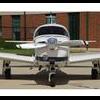
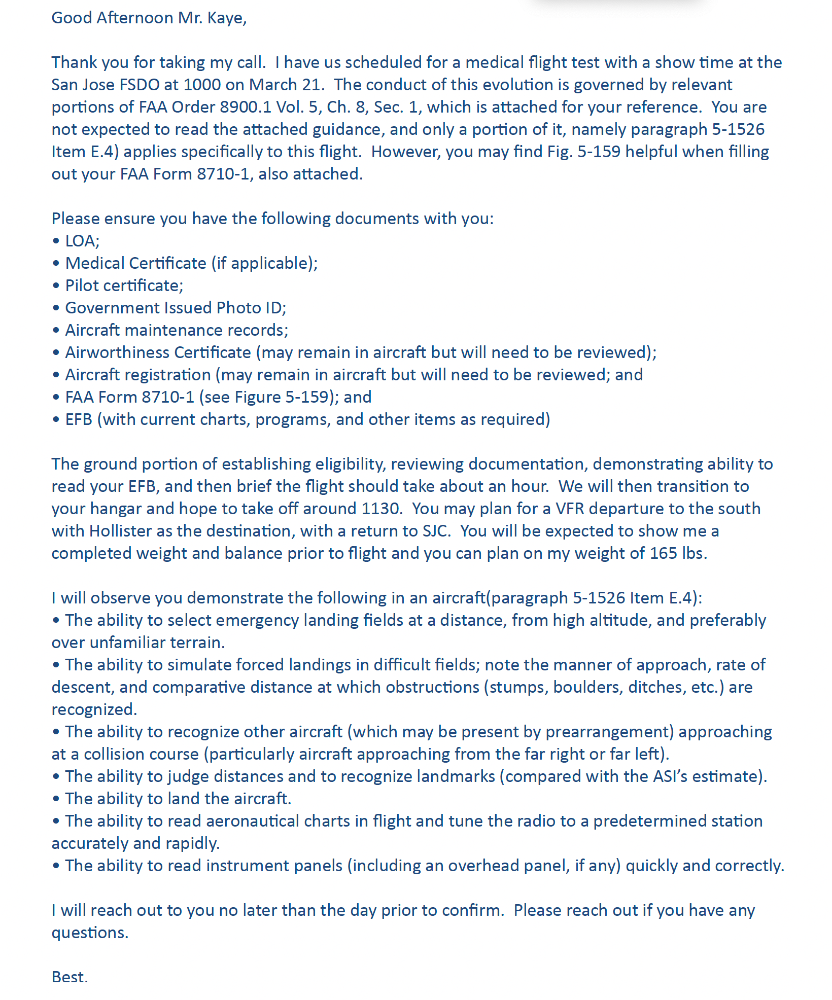

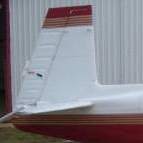



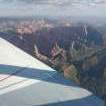



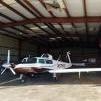
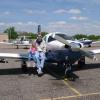

.thumb.png.7c67574d7b28f67b0b4a17760919b1ac.png)
